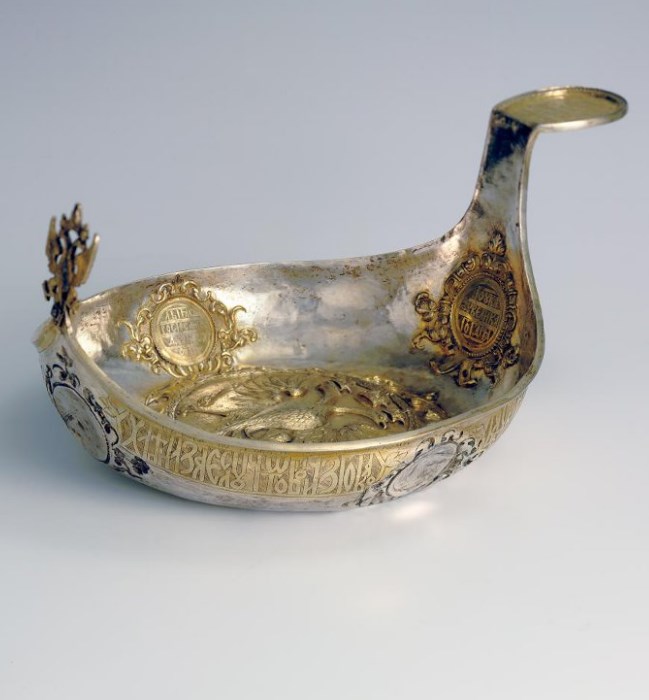19 October 2019–19 January 2020
Perm City, Perm State Art Gallery
Organized by:
The Moscow Kremlin Museums, Perm State Art Gallery
Participants:
The Moscow Kremlin Museums
-
 The exhibition ‘Masterpieces of the Kremlin Workshops’ organized at Perm State Art Gallery explores the phenomenon of court workshops, which played a significant role in cultural and artistic life in 17th-century Russia. Unique objects from the Moscow Kremlin Museums’ collection familiarize visitors with manifold activities of the Kremlin workshops, covering nearly all the aspects of court life.
The exhibition ‘Masterpieces of the Kremlin Workshops’ organized at Perm State Art Gallery explores the phenomenon of court workshops, which played a significant role in cultural and artistic life in 17th-century Russia. Unique objects from the Moscow Kremlin Museums’ collection familiarize visitors with manifold activities of the Kremlin workshops, covering nearly all the aspects of court life. The display consists of several sections dedicated to individual workshops. This division helps to reveal features of each workshop, and at the same time to show active interaction between them, manifested in the cooperation of masters of different specialities.
Icons Workshop, which was incorporated into the Armoury Chamber in 1640s, took the leading position in forming the 17th-century art. The school of royal icon-painters developed and introduced innovative methods and techniques that determined the new capital style. The work area of court masters was very wide—from church painting to book miniatures, from icon painting to decorative painting of furniture and toys. Most of the icons presented at this display are works of the appointed icon-painters of the Armoury Chamber.
Tsarina’s, Sovereign’s and Private Quarters chambers were in charge of intimate needs and private quarters of the Royal family, liturgical vestments were also made there. High-skilled embroideresses worked with ‘gold and silver and silk, gems and pearls’.
Precious dinnerware, church plates, as well as icon covers, were produced in Silver and Gold chambers, where jewellers of various specialities were executing orders of tsars and patriarchs. The tsars presented silver drinking ladles with the image of a double-headed eagle and an inscription to their subjects for service. While most of the church silver works were meant to be donated to different churches and monasteries.
The Stables Office was in charge of the Royal Stables, precious horse harness and horse cloth, carriages and sleighs, and also engaged in the organization of the royal hunting, parades and reviews of troops. On display are parts of horse harness, which were kept in the Stables Treasury in the 17th century, as well as ceremonial uniform of the day—velvet caftans embroidered with a double-headed eagle on the badge.
Arms and armour were produced and stored in the Armoury Chamber, which became the leading artistic centre in the 17th century. The exhibited sabre, broadsword, koncerz, carbine, harquebus and pistols are outstanding samples of Russian ceremonial bladed weapons and firearms. An important place in court ceremonial was given to saadak—archer’s accessory, consisting of a bowcase and a quiver.
The last section of the display is dedicated to boyar Bogdan Khitrovo, head of the Armoury Chamber and keeper of the tsar's weapons. It was during his direction when the Kremlin workshops reached their heyday. The exhibition presents sixty-three items, revealing the diversity of the activities of the Kremlin workshops in the 17th century and reflecting the uniqueness, memorial value and stylistic richness of the Moscow Kremlin Museums’ collection.
General partner of the project – PJSC LUKOIL
The project is carried out within the framework of the cooperation program between the Moscow Kremlin Museums and PJSC LUKOIL for the implementation of regional exhibition projects.














